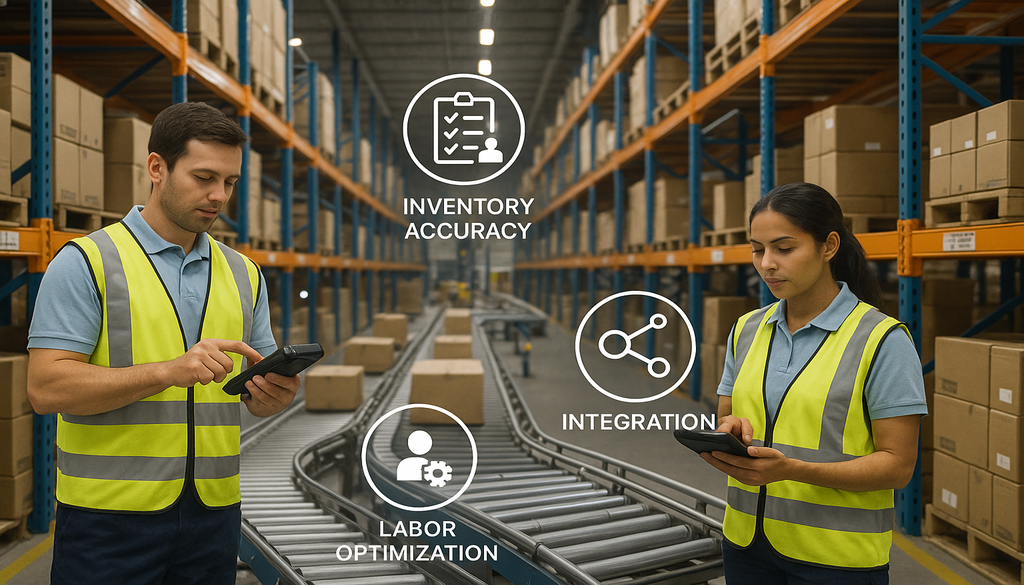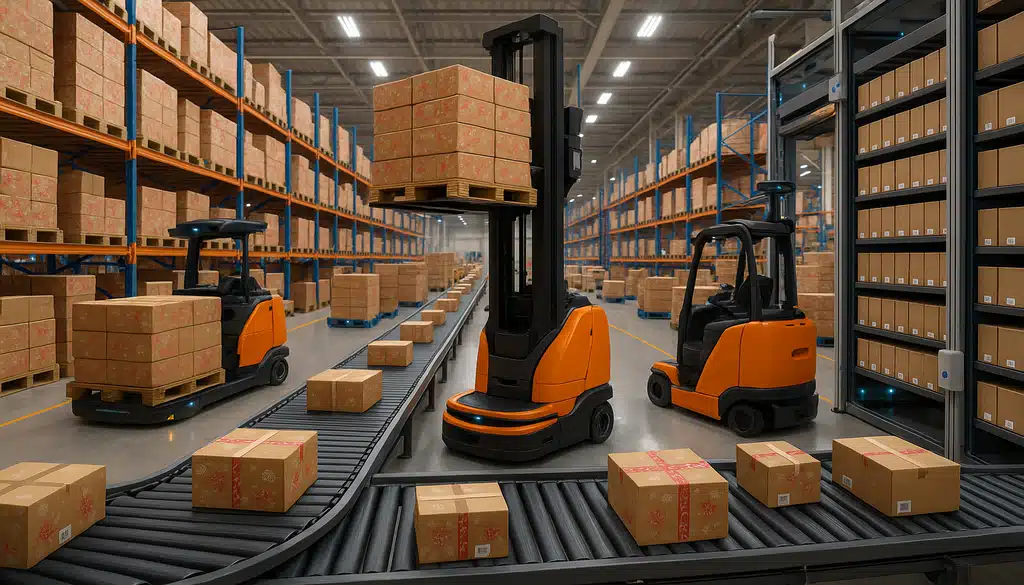Maximizing ROI from Your Warehouse Management System (WMS) Investment
In today's fast-paced logistics and supply chain environment, maximizing the return on investment (ROI) from your Warehouse Management System (WMS) is crucial. A well-implemented WMS can transform warehouse operations, leading to increased efficiency, reduced costs, and improved customer satisfaction. This blog post delves into practical strategies and insights tailored for warehouse managers, supply chain professionals, and logistics leaders aiming to optimize their WMS utilization. By understanding the key components and leveraging the right features, you can ensure your WMS investment delivers substantial returns.
Understanding the Basics of WMS ROI
A Warehouse Management System (WMS) is a software solution designed to optimize warehouse operations, including inventory management, order fulfillment, and labor management. WMS ROI refers to the financial benefits gained from implementing a WMS compared to the costs incurred. Understanding this concept is essential for making informed decisions about your WMS investment.
Several factors influence WMS ROI, including the system's ability to enhance inventory accuracy, streamline operations, and reduce labor costs. By focusing on these components, businesses can achieve significant cost savings and operational improvements. Additionally, a well-integrated WMS can enhance customer satisfaction by improving order accuracy and delivery times, further boosting ROI.
Essential Features of WMS That Boost ROI
To maximize ROI, it's crucial to leverage the essential features of a WMS that directly impact operational efficiency and cost savings. One of the most critical features is inventory accuracy and real-time data tracking. Accurate inventory data reduces stockouts and overstock situations, ensuring optimal inventory levels and minimizing carrying costs. Real-time tracking allows for immediate updates on inventory status, enhancing decision-making and responsiveness.
Another key feature is labor management and optimization. A WMS can streamline labor-intensive processes, such as picking, packing, and shipping, by automating tasks and optimizing workforce allocation. This leads to reduced labor costs and increased productivity. Additionally, integration capabilities with other systems, such as Enterprise Resource Planning (ERP) and Transportation Management Systems (TMS), enable seamless data flow across the supply chain, further enhancing efficiency and reducing errors.
Measuring the Impact of WMS on Operational Efficiency
To assess the effectiveness of a WMS, it's essential to measure its impact on operational efficiency using specific metrics. Key performance indicators (KPIs) such as order accuracy, inventory turnover, and labor costs provide valuable insights into the system's performance. For instance, an increase in order accuracy directly correlates with improved customer satisfaction and reduced returns, while higher inventory turnover indicates efficient stock management.
Real-world examples highlight the tangible benefits of a WMS. For example, a leading retail company implemented a WMS and saw a 20% reduction in labor costs and a 15% increase in order accuracy within the first year. These improvements not only enhanced operational efficiency but also contributed to a significant ROI.
Strategies to Maximize WMS ROI
To fully capitalize on your WMS investment, consider implementing the following strategies:
-
Regular Training and User Competency Assessments: Continuous training ensures that employees are proficient in using the WMS, leading to more efficient operations and fewer errors. Regular assessments help identify skill gaps and provide targeted training to address them.
-
Upgrading and Scaling Your WMS Solution: As your business grows, your WMS should evolve to meet new demands. Regularly upgrading your system ensures it remains effective and can handle increased volumes and complexities.
-
Leveraging Analytics and Reporting Tools: Advanced analytics and reporting tools provide insights into operational performance, helping identify areas for improvement. By continuously analyzing data, businesses can make informed decisions that enhance efficiency and drive ROI.
Common Pitfalls in WMS Implementation and How to Avoid Them
While a WMS offers numerous benefits, certain pitfalls can hinder its effectiveness. One common issue is over-customization, which can lead to increased complexity and maintenance costs. To avoid this, focus on implementing standard features that align with your business needs and only customize when necessary.
Another challenge is underestimating the importance of user adoption and change management. Successful WMS implementation requires buy-in from all stakeholders and effective change management strategies. Engage employees early in the process, provide comprehensive training, and communicate the benefits of the system to ensure smooth adoption.
Future Trends in WMS Technology and ROI
The future of WMS technology promises exciting advancements that can further enhance ROI. Emerging technologies, such as artificial intelligence (AI) and the Internet of Things (IoT), are set to revolutionize warehouse operations. AI can optimize inventory management and predict demand patterns, while IoT devices enable real-time tracking of assets and inventory.
As these technologies become more integrated into WMS solutions, businesses can expect significant improvements in efficiency and cost savings. Predictions on ROI improvements suggest that companies adopting these technologies will see faster returns on their WMS investments, positioning them for long-term success in a competitive market.
Conclusion
Maximizing ROI from your Warehouse Management System requires a strategic approach that involves understanding essential features, measuring operational impact, and staying abreast of technological trends. By implementing regular training, upgrading your system, and leveraging analytics, you can ensure your WMS meets current demands and adapts to future challenges. These practices not only enhance operational efficiency but also drive substantial financial returns, making your WMS investment a valuable asset in your supply chain strategy.
Frequently Asked Questions (FAQ)
Q1: What is the typical ROI timeline for a Warehouse Management System?
A1: The ROI timeline for a Warehouse Management System can vary based on several factors, including the complexity of the system, the scale of implementation, and the extent of operational adjustments required. Typically, businesses can expect to see a return on investment within one to three years. This timeline allows for the system to be fully integrated and for operational efficiencies to be realized.
Q2: How can integrating a WMS with other systems improve ROI?
A2: Integrating a WMS with other systems, such as ERP and TMS, significantly enhances data visibility across platforms. This integration reduces errors, streamlines operations, and facilitates better decision-making. By having a unified view of the supply chain, businesses can optimize processes, reduce costs, and ultimately improve ROI.
Q3: What are some indicators that a WMS is not delivering expected ROI?
A3: Indicators that a WMS may not be delivering the expected ROI include stagnant inventory turnover rates, high labor costs, and persistent inaccuracies in order fulfillment. Additionally, if the system is not being fully utilized or if there are frequent operational disruptions, it may be time to reassess the WMS's effectiveness and explore potential improvements.
Q4: Can small to mid-sized enterprises expect a good ROI from WMS investments?
A4: Yes, small to mid-sized enterprises (SMEs) can achieve significant ROI from WMS investments. By selecting a system tailored to their specific needs, SMEs can improve operational efficiency, reduce costs, and enhance customer satisfaction. The key is to choose a scalable solution that can grow with the business and provide ongoing value.
Q5: How often should a WMS be upgraded to maximize ROI?
A5: The frequency of WMS upgrades depends on technological advancements and business growth. However, it is generally advisable to review and potentially upgrade the system every 3-5 years. Regular upgrades ensure the WMS remains effective, competitive, and capable of meeting evolving business needs and technological innovations.






